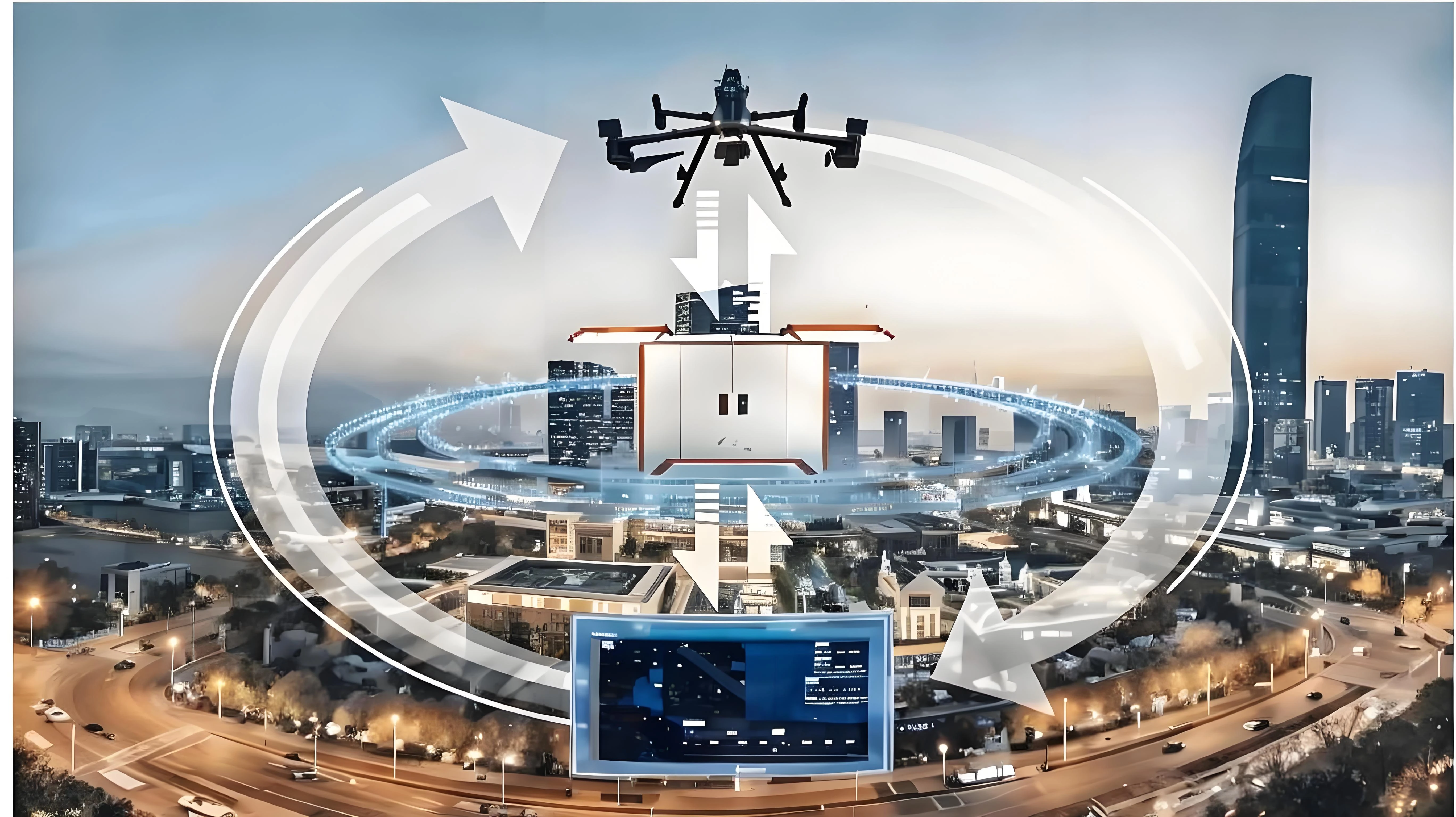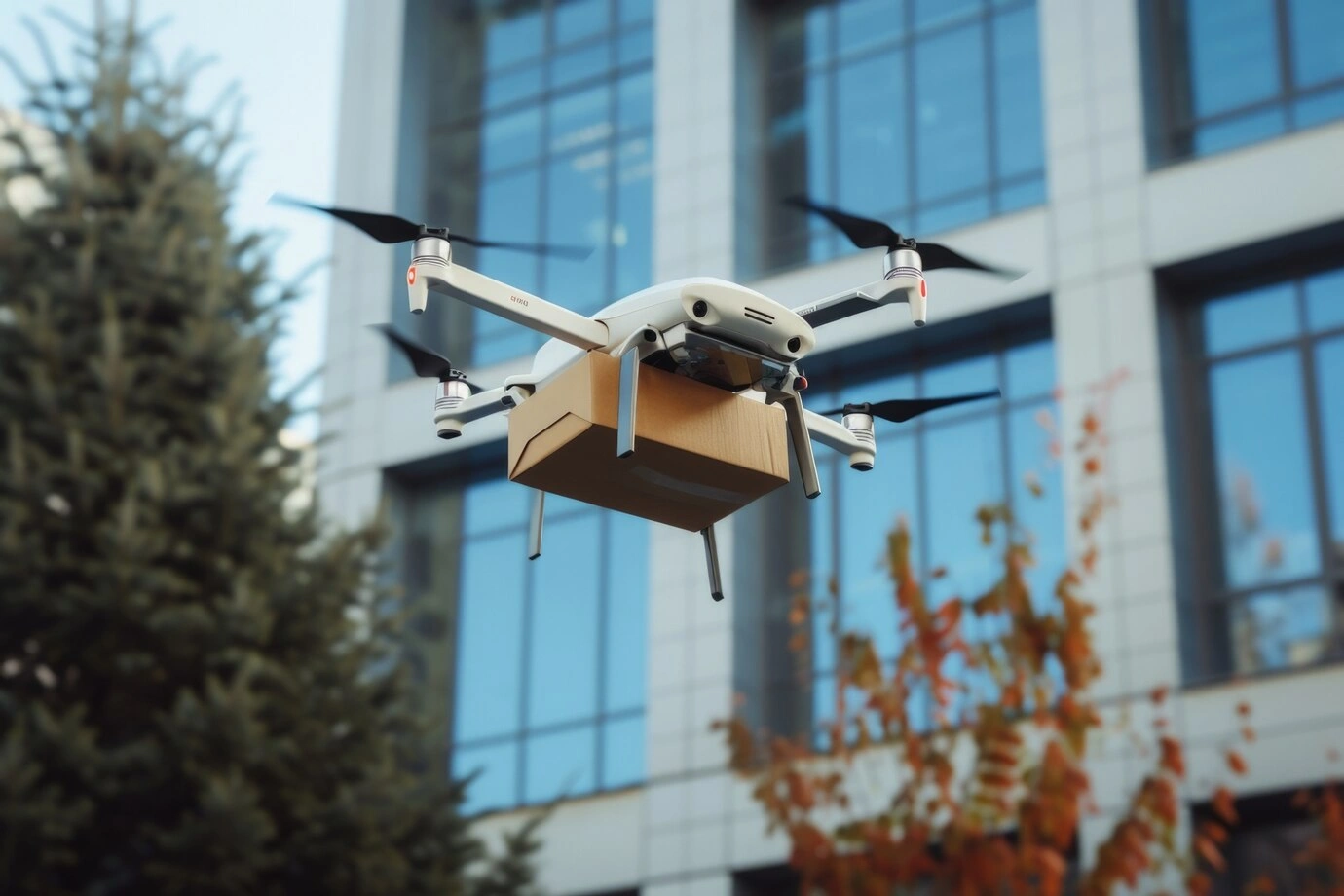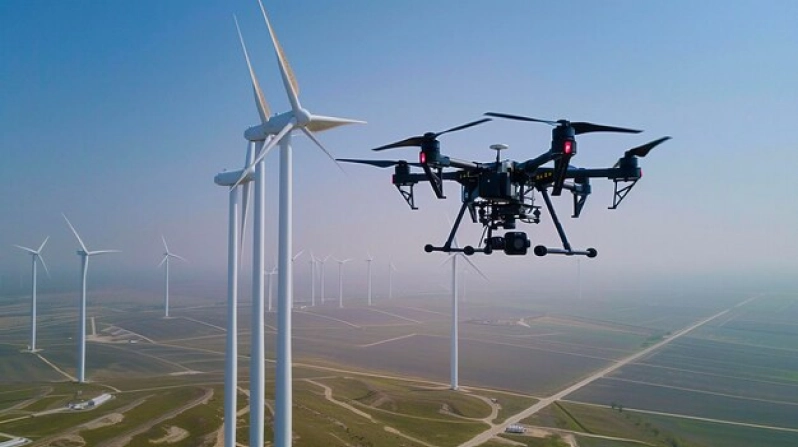The Rise of Drones: New Stars in the Sky
In recent years, the widespread use of drones has been rapidly transforming our lives. Whether in entertainment, industry, or research, drones are showcasing their unique potential. For anyone curious about the future of technology, the advancements in the drone industry are certainly worth a closer look.
As technology advances, drones are no longer limited to aerial photography and delivery services. They are becoming multifunctional tools, spanning a variety of industries and providing innovative solutions to complex problems. In this article, we’ll dive into the current state of drone technology, future trends, and the impact drones are having across different fields.
How Drone Technology is Transforming Traditional Industries
Drone technology is changing how traditional industries operate, from agriculture to construction. In agriculture, drones help farmers monitor crop health, optimize irrigation systems, and increase yield. These applications not only save time but also significantly reduce resource waste.
In construction and infrastructure, drones are widely used for surveying and visual inspections. With rapid and precise data collection, drones boost project efficiency and safety. These small flying devices can easily reach hard-to-access areas, greatly reducing the risks associated with manual inspections.
The logistics industry is also leveraging drones to improve delivery speed and efficiency. Drones can complete long-distance deliveries quickly, especially in areas with limited road access. This innovative approach is undoubtedly paving a new path for the future of logistics and transportation.
The Fusion of Drones and Artificial Intelligence: Intelligent Aerial Companions
The combination of drones and artificial intelligence is gradually evolving into intelligent aerial companions, bringing new applications and technological breakthroughs to various fields. AI technology enables drones to navigate autonomously, allowing them to automatically identify and avoid obstacles, ensuring safer and more precise flights. Additionally, intelligent algorithms equip drones with real-time data processing and analysis capabilities, enabling them to quickly respond to unexpected situations and provide efficient immediate feedback to operators.
In disaster relief, these intelligent drones showcase unparalleled advantages. Equipped with AI, drones can autonomously survey disaster areas, identify critical locations, and quickly develop and optimize rescue routes, providing rescue teams with the best solutions. They can complete extensive damage assessments in a short time, pinpointing the exact locations of trapped individuals and using intelligent path planning to create safe and efficient rescue routes. This high level of real-time responsiveness significantly improves the efficiency of emergency operations, buying precious time for swift rescues.
The application of smart drones in environmental monitoring is also expanding. With high-precision sensors and AI algorithms, drones can conduct comprehensive monitoring of air, water sources, and land, collecting and analyzing environmental data in real time. These drones provide scientists with dynamic data support, helping them achieve more accurate results in climate change predictions and ecosystem health assessments. They can even identify and track the ranges of endangered species, providing scientific evidence for biodiversity conservation and assisting various ecological protection projects in maintaining balance and sustainability.
Safety and Privacy: The Double-Edged Sword of Drone Technology
As drones become more widely used, discussions around safety and privacy are increasing. While drones offer many conveniences, they also raise a host of privacy concerns and security risks. Whether used for surveillance in public spaces or aerial photography in urban areas, drones can inadvertently capture and store others’ information, raising the risk of personal privacy exposure. Additionally, drones may face hacking attempts or improper operation during flights, leading to illegal uses or accidents. Therefore, establishing comprehensive regulations and standards to ensure the safe use of drones has become urgent.
Governments and relevant organizations around the world are working to explore effective regulatory measures to balance the innovative development of drone technology with social responsibility. For example, some countries have implemented strict drone registration systems, requiring operators to have flight permits obtained through training and testing to ensure safe operations. Furthermore, the designation of different airspace and the establishment of restricted flight zones are also important measures for regulating drone use. These policies not only track the identity and usage of drones but also effectively limit their access to sensitive areas, preventing potential privacy violations and security incidents.
Drone manufacturers are also accelerating technological upgrades, proposing new solutions for data security and user privacy. Many companies have introduced higher levels of data encryption technology in their drones to prevent unauthorized access and data breaches. Additionally, the implementation of anti-hacking systems and remote fault control technology has significantly improved drones’ protection levels, making them less susceptible to hijacking or interference from external attackers during flights. These technological advancements not only safeguard user privacy and data security but also lay a more solid safety foundation for the widespread application of drones, ensuring that technological progress benefits society rather than posing risks.
Environmental Impact and Sustainable Development
The application of drone technology not only profoundly affects human society but also brings positive changes to the natural environment. With the widespread use of drones across various fields, they effectively reduce our reliance on traditional fuel-powered vehicles, significantly lowering carbon emissions in the transportation sector. Powered by electricity, drones can greatly decrease greenhouse gas production while carrying out tasks, helping to mitigate global warming trends. Especially in short-distance transportation and delivery services, drones are gradually becoming a more eco-friendly alternative, further promoting the development of a low-carbon economy.
Drones also play a unique role in natural resource management and ecological conservation. One important application is forest deforestation monitoring. By equipping drones with high-precision cameras and sensors, they can capture and monitor large forest areas in real time, improving data collection efficiency while significantly lowering the costs of manual inspections. With drone technology, environmental researchers can more effectively track wildlife migration patterns, obtaining real-time geographical information and behavioral data about animals, which greatly facilitates conservation efforts. In water resource management, drones equipped with specific sensors can detect pollutant levels in water bodies, quickly identifying changes in water quality and helping environmental protection agencies take early intervention measures.
However, achieving sustainable development for drones still faces challenges, particularly in manufacturing and disposal. The production of drones often involves significant resource consumption, leading manufacturers to actively explore the use of recyclable materials and design more energy-efficient manufacturing processes. The goal is to extend the environmental benefits of drones throughout their entire lifecycle. By adopting sustainable materials, optimizing designs, and increasing the durability of drones, the industry hopes to further reduce the consumption of natural resources, striving for a better balance between technological advancement and environmental protection.
Market Outlook: The Growth Drivers of the Drone Economy
The drone market is experiencing unprecedented growth opportunities, driven by continuous technological breakthroughs and rising demand across various industries. With advancements in technology and the expansion of functional applications, the market size for drones is expected to steadily increase at a double-digit annual growth rate in the coming years. This trend, fueled by both commercial and consumer sectors, positions drones as a key engine of economic development.
In commercial applications, drones bring significant cost savings and efficiency improvements to businesses due to their high efficiency and precision. In the logistics sector, drones are already being used to optimize delivery routes, reduce delivery times, and even reach remote areas that are hard to access by traditional means. For facility inspections, drones help companies minimize the risks associated with manual climbing and hazardous operations, being widely used for routine inspections and maintenance of critical infrastructure such as bridges, pipelines, and power plants, thus effectively lowering operational costs. In agricultural management, drones not only assist in seed sowing and pesticide spraying but also leverage high-resolution imaging and real-time data analysis to help farmers monitor crop health, quickly identify pests and diseases, and manage field operations scientifically, greatly enhancing agricultural productivity.
In the consumer market, the popularity of aerial photography drones has made capturing high-quality aerial images accessible to non-professionals. Individual users can easily operate drones to capture panoramic videos and photos, whether for travel, outdoor activities, or everyday life, allowing for more diverse and creative ways to document their experiences. This demand has driven robust growth in drone equipment sales and has also expanded the market for related accessories and services, such as upgraded batteries, protective cases, and video editing software. This not only enriches the user experience but also fosters the prosperous development of the entire drone ecosystem.
Technological Innovations: The Future Development Directions of Drones
Drones, as products that heavily rely on technology, have immense future development potential, with various innovations driving them to continuously break new ground and expand their application boundaries. The future of drones will benefit from comprehensive advancements in emerging materials, power systems, and communication technologies, which will not only significantly enhance their performance but also bring about entirely new functional experiences.
First, the development and application of lightweight materials will provide drones with outstanding endurance, allowing them to stay airborne for longer periods without being restricted by payload limits. At the same time, advancements in battery technology are steadily progressing. More efficient and durable batteries will greatly improve the energy efficiency of drones, further optimizing their flight time and payload capacity. The combination of these technologies will make drones more efficient and stable during missions, enabling their use in a wider range of scenarios.
Moreover, the widespread adoption of 5G communication technology will bring a qualitative leap in real-time data transmission for drones. A high-speed, low-latency network environment will allow drones to navigate complex, real-time applications effortlessly, whether it’s transmitting high-resolution images, monitoring dynamic environments, or conducting remote control tasks. With 5G, drones will gain instant feedback capabilities akin to having “real-time eyes,” opening up more possibilities for immediate applications.
These technological breakthroughs will not only drive the drone industry toward smarter and more convenient solutions but also provide new research directions and technical references for other technology sectors, inspiring cross-industry collaborative innovations. These ongoing technological advancements will serve as the cornerstone for the future development of drones, promoting their widespread applications in industries such as agriculture, logistics, surveillance, and more.
Industry Challenges: Obstacles Facing Drone Development
Despite the enormous potential for growth in the drone industry, several significant challenges must be addressed to realize this future. Firstly, the legal and regulatory framework surrounding drones is still incomplete, with many countries and regions continuously adjusting regulations regarding flight permissions, airspace classification, and operational guidelines. This uncertainty creates challenges for manufacturers and users alike. Additionally, the lack of standardized global drone technology results in significant discrepancies in equipment manufacturing, performance testing, and data transmission, affecting cross-regional compatibility and limiting the breadth and depth of international applications.
Moreover, privacy and security concerns cannot be overlooked. As drones become more prevalent across various fields, public apprehension regarding privacy breaches, data security, and flight safety is increasing. Ensuring personal privacy and societal security has become a critical issue for the industry’s development.
To address these obstacles, collaborative efforts among industry stakeholders are essential. Government agencies must expedite the establishment of comprehensive regulations and provide a clear regulatory framework to facilitate the steady growth of the drone industry. Companies should continuously drive technological innovation to enhance the performance and safety of drones, thereby reducing potential risks. Academic research must also focus on foundational studies in drone applications, exploring cutting-edge areas such as new materials, intelligent sensing technologies, and reliability design to elevate the overall technological level of drones. This multi-faceted collaboration can effectively tackle current industry barriers and lay a solid foundation for the future drone market.
Additionally, consumer education is vital. By promoting awareness and understanding, the public can gain a correct perception of drones, including their operational standards, advantages, and potential risks, which can help dispel biases and resistance stemming from misunderstandings. Only by increasing user trust and acceptance can the drone industry achieve sustainable and healthy growth with public support.
Business Opportunities: New Ventures in the Drone Industry
The rapid rise of the drone industry has opened up vast commercial opportunities for entrepreneurs, spanning various sectors from drone manufacturing and related software development to diverse service offerings. This dynamic ecosystem is fueled by continuous technological advancements and an expanding range of applications that now include agriculture, logistics, security, and film production, effectively covering nearly every industry. Entrepreneurs can leverage their strengths and interests to enter various niche markets.
For instance, the drone training sector is gaining traction as industry demand grows. There is an increasing focus on specialized pilot training and operational courses, presenting excellent business prospects for training institutions and educational platforms. Additionally, the drone rental market is seeing a rise in demand for short-term rentals, particularly for special projects or events, providing a flexible business model for entrepreneurs. Maintenance and repair services for drones also show significant market potential; as usage frequency increases, after-sales support will become a critical entry point for entrepreneurs.
Successful entrepreneurs often possess keen market insight, enabling them to swiftly capture industry trends and shifts in consumer needs. They can adjust their business strategies accordingly, utilizing data analysis to identify potential service demands or developing new software features to enhance user experiences. In this rapidly evolving industry, flexibility and innovation are paramount, requiring entrepreneurs to continually explore new business models and application scenarios to maintain their competitive edge and market position.
In summary, the drone industry presents a wealth of opportunities for those willing to take risks and embrace innovation. The future prospects for growth and development in this sector are promising, making it an exciting landscape for aspiring entrepreneurs.
Social Responsibility: Ethical Considerations of Drone Technology
The rapid development of drone technology has brought unprecedented convenience across various fields, yet fostering a sense of social responsibility has become increasingly important. As we push for technological advancement, it is crucial to ensure that its applications adhere to ethical standards, meaning that the use of drones should not have negative impacts on society and the environment. For instance, manufacturers should not only focus on performance and profit when designing and producing drones but also integrate environmental protection and sustainability into the entire production chain. This includes selecting recyclable materials, reducing energy consumption, and minimizing noise, thereby minimizing ecological impact.
Users also bear significant responsibility, as they must operate drones in a legal and ethical manner, avoiding infringements on others’ privacy or disruptions to public order. Whether performing tasks such as photography, surveying, or transportation, users should understand and comply with relevant laws and regulations to prevent causing distress or safety hazards to others. By raising public awareness of legal responsibilities and ethical standards, we can mitigate potential issues arising from improper use.
Furthermore, collaboration among all stakeholders in the industry is essential to establish a responsible and sustainable drone ecosystem. This requires support and guidance from policymakers, as well as cooperation among industry associations and relevant organizations to develop industry standards and best practices that encourage companies and users to prioritize social responsibility. Through such collective efforts, the advancement of technology and social welfare can achieve harmonious unity, ensuring that drone technology serves as a positive force for societal development.
Conclusion: Embracing the Arrival of the Drone Era
The development of drone technology has opened up vast possibilities for our future lives. From enhancing agricultural productivity and optimizing logistics delivery to innovating film production methods, drones are uniquely reshaping our world. Despite facing various challenges, such as regulatory issues, safety concerns, and the need for continuous technological advancement, the drone industry continues to demonstrate remarkable vitality through ongoing research and innovation. For those eager to explore this field, now is the perfect time to engage in this thriving industry, where one can not only experience the conveniences brought by technology but also discover new business opportunities. As we enter the drone era, our future lives will become more vibrant and diverse thanks to the widespread application of these flying devices.




